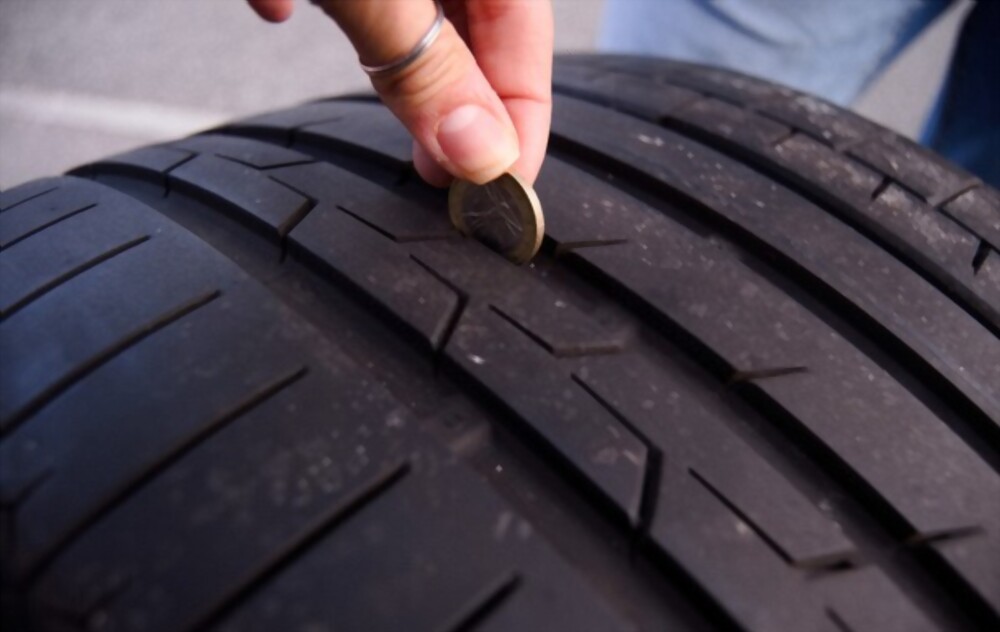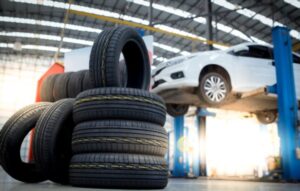Whether you’re an automotive enthusiast or simply a daily commuter, it’s important to understand the significance of tire maintenance for ensuring safety and optimal performance of your vehicle. In this article, we will discuss the key signs that indicate it’s time to replace your tires, and the factors to consider when making this decision.
Signs that it’s time to replace your tires
Tread wear
- The penny test: A simple way to check your tire’s tread depth is by using a penny. Insert the coin with Abraham Lincoln’s head facing down into the tire tread. If the entire head is visible, it’s a clear indication that your tires need replacement.
- Built-in tread wear indicators: Many tires are equipped with tread wear indicators, which are small bars that become visible as the tire wears down. If these bars are visible across the entire tire, it’s time for a replacement.
Aging tires
- Visible cracks or sidewall bulges: Over time, tires can develop cracks or bulges in the sidewall due to exposure to the elements or general wear and tear. If you notice any of these issues, it’s a sign that your tires need to be replaced.
- How long tires typically last: On average, tires should be replaced every six years, regardless of the tread depth. This is because the rubber compounds in the tires deteriorate over time, affecting their overall performance and safety.
Uneven wear patterns
- Alignment issues: If your tires are wearing unevenly, it could be a sign of alignment problems. While realigning your wheels may resolve the issue, it’s important to replace the tires if the wear is excessive.
- Suspension problems: Uneven tire wear could also indicate suspension issues. In such cases, consult a mechanic to address the underlying problem and replace the tires if needed.
Frequent flats or slow leaks
- Punctures and damages: If you’re experiencing frequent flat tires or slow leaks, it could be due to punctures or other damages. In some cases, repairing the tire may be sufficient, but if the damage is severe or recurring, a replacement is necessary.
Factors to consider when deciding to replace your tires
Tire type
- Summer vs. all-season vs. winter tires: Depending on your region’s climate and driving conditions, you may need to switch between different types of tires throughout the year.
- Performance vs. touring tires: Consider the type of driving you do, whether it’s high-speed performance driving or leisurely touring, when choosing replacement tires.
Driving conditions
- Climate and road surface: The type of roads and weather conditions you typically encounter should factor into your tire replacement decision.
- City vs. highway driving: The majority of your driving, whether it’s in the city or on highways, may influence the type of tires best suited for your needs.
Vehicle type
- Sports cars vs. family sedans vs. trucks: Different vehicles have different tire requirements. Ensure you choose tires that are suitable for your specific vehicle.
- Matching tires to your vehicle’s needs: Consult your owner’s manual or a professional to determine the right tire specifications for your car.
Maintenance habits
- Proper tire inflation: Maintaining appropriate tire pressure helps extend the life of your tires and improves fuel efficiency.
- Regular tire rotations and alignments: Schedule regular tire rotations and alignments to promote even wear and prolong tire life.
Choosing the right replacement tires
- Understanding tire size and specifications When purchasing new tires, refer to the information found on your car’s door jamb, owner’s manual, or the sidewall of your current tires to determine the correct size and specifications.
- Researching reputable tire brands Before making a decision, research various tire brands and read customer reviews to ensure you choose a reliable and high-quality product.
- Considering budget and value When selecting new tires, consider your budget and prioritize value for money. While it may be tempting to opt for the cheapest option, investing in a quality tire from a reputable brand can save you money in the long run.
- Consulting professionals for advice If you’re unsure about which tires to choose, consult a professional mechanic or tire specialist for personalized recommendations based on your driving habits and vehicle requirements.
Conclusion
In summary, understanding the signs that indicate tire replacement is essential for maintaining the safety and performance of your vehicle. When it’s time to replace your tires, consider factors such as tire type, driving conditions, vehicle type, and maintenance habits. By researching tire brands, considering your budget, and seeking professional advice, you can make an informed decision and invest in the right set of tires for your needs. Prioritizing tire maintenance and making timely replacements will contribute to a safer and more enjoyable driving experience.


